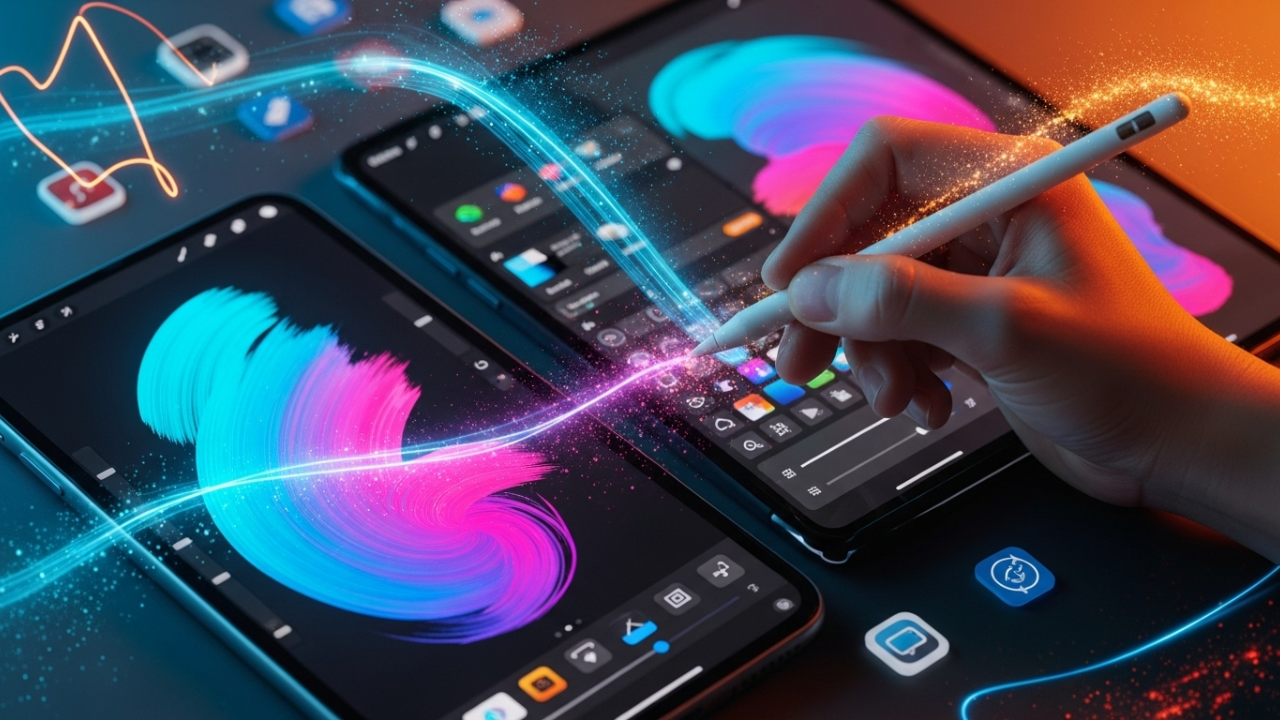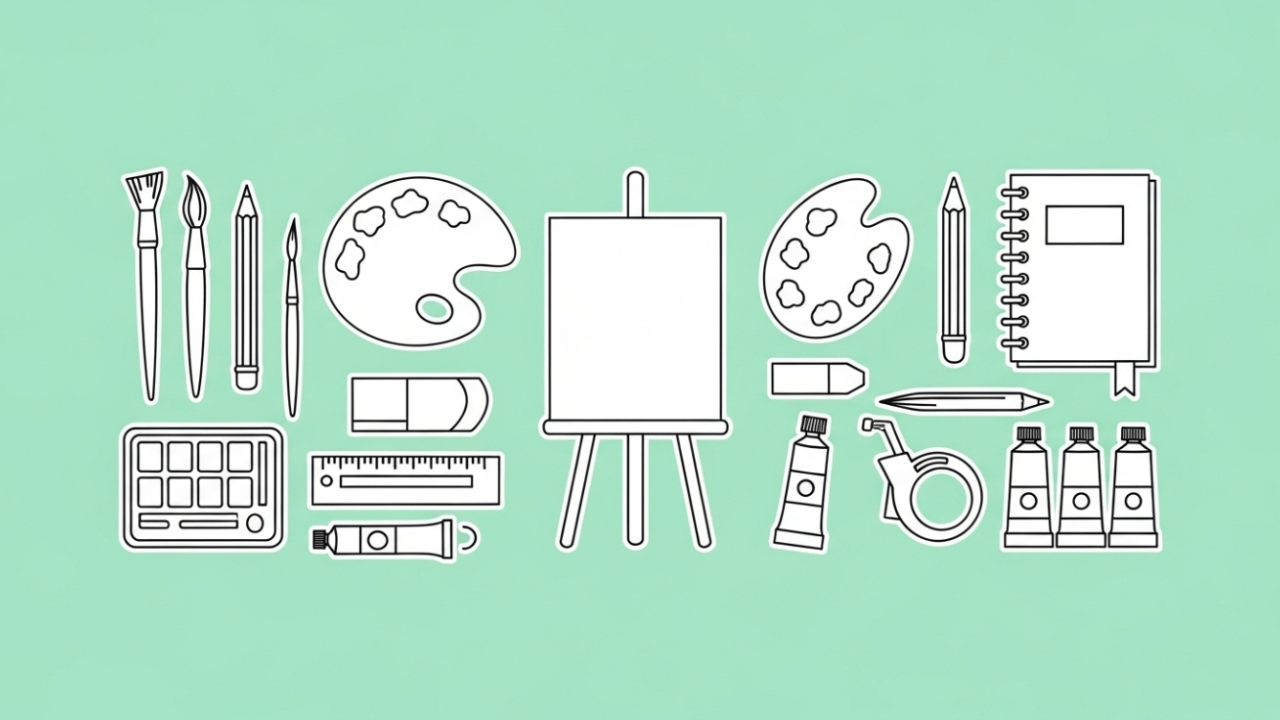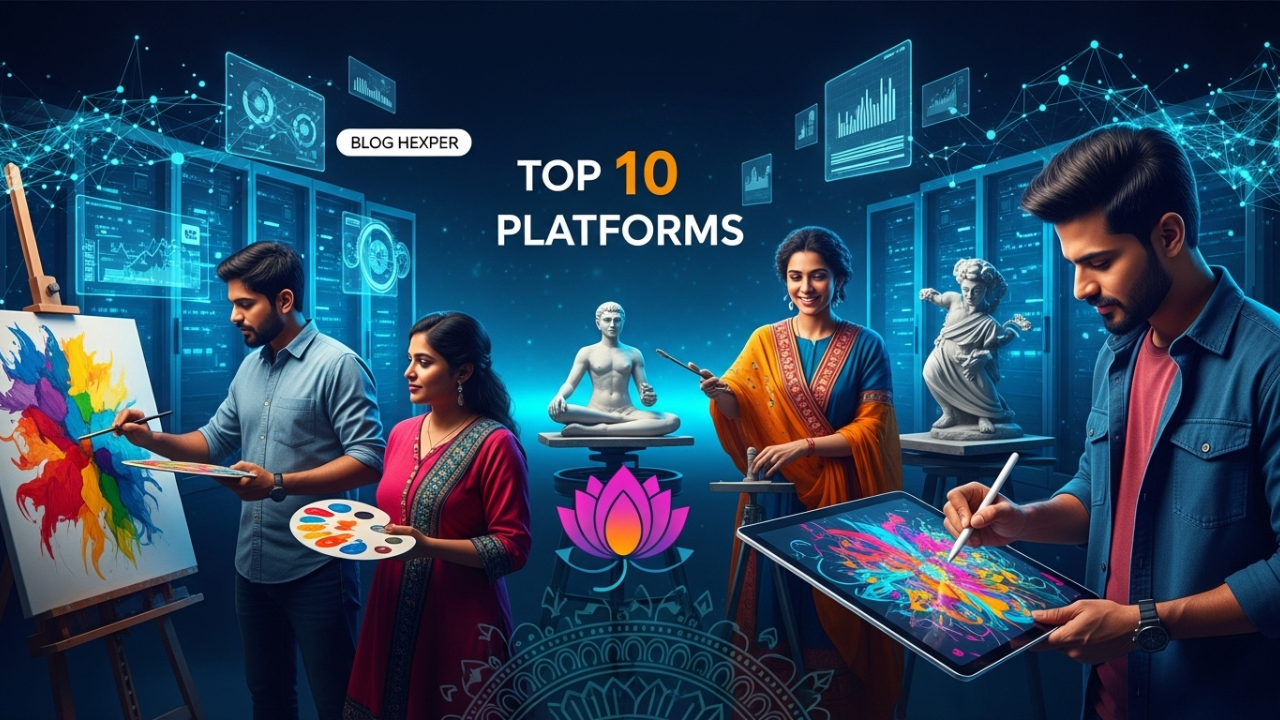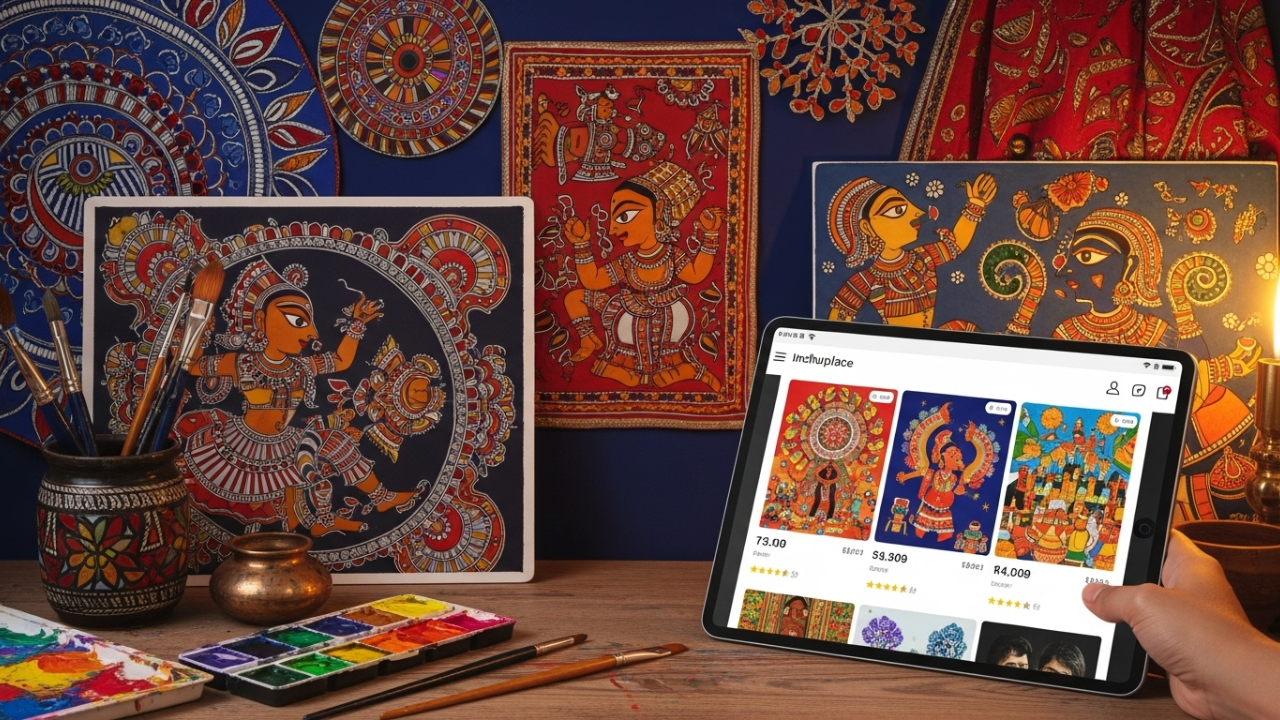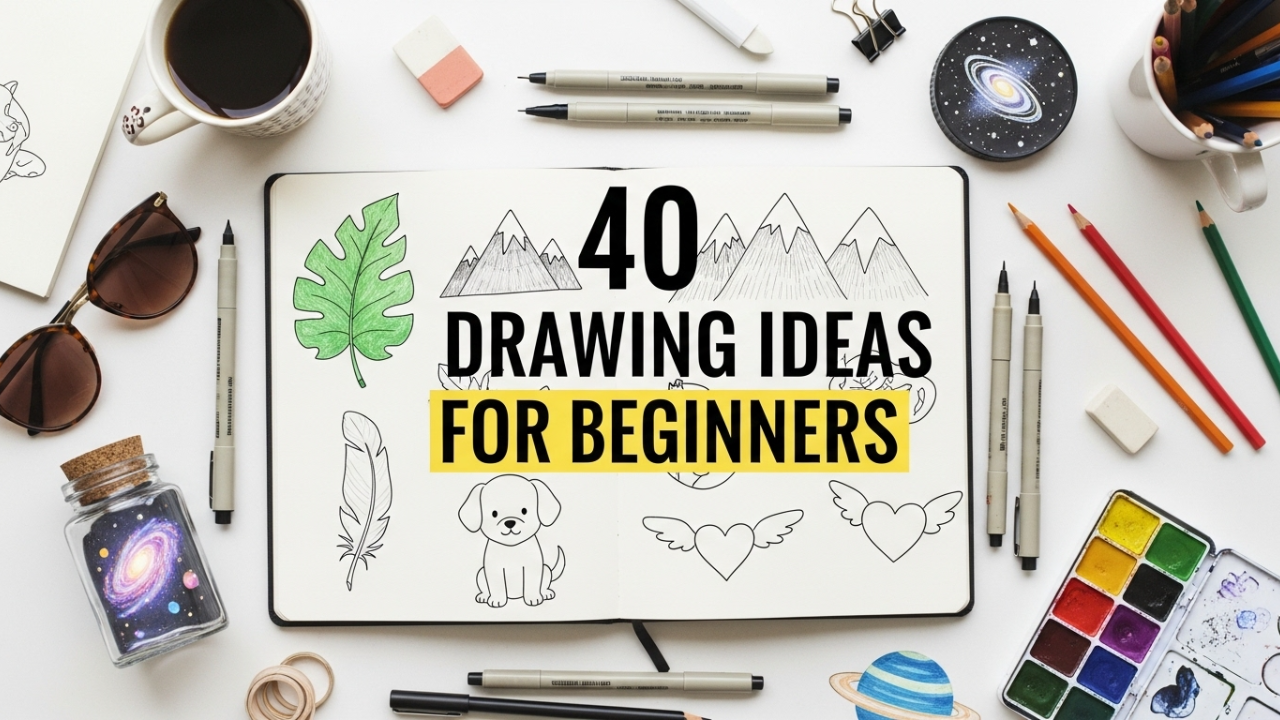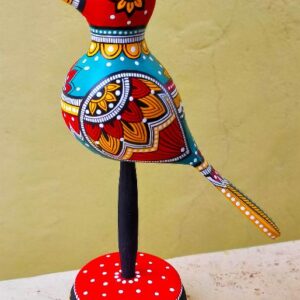Table of Contents
ToggleHow to Become a Digital Artist (Complete Beginner’s Guide)
To become a digital artist, start by learning the fundamentals of art, such as sketching, shading, and color theory. Then, choose digital art software like Photoshop, Procreate, or Krita and practice consistently using a tablet, laptop, or phone. If you’re wondering how to become a digital artist, remember—you don’t need a degree, just creativity, patience, and dedication.
What Is Digital Art?
Digital art is artwork created using digital tools instead of traditional mediums like paper or canvas. Artists use devices such as tablets, laptops, and smartphones to draw, paint, or design. From concept art and character design to animation and NFT art, digital art has transformed the modern creative world.
In short, digital art combines creativity with technology, making it one of the most versatile and in-demand art forms today.
Why Become a Digital Artist?
The digital art industry is booming. Brands, game studios, YouTubers, and social media influencers all need digital artists for visuals, thumbnails, character art, and more. Becoming a digital artist allows you to:
- Work remotely from anywhere
- Earn money online through commissions and prints
- Express creativity in new, innovative ways
- Build a personal brand and fan base
If you want to explore the artistic world in a modern, tech-driven way, digital art is the perfect career path.
Step-by-Step Guide: How to Become a Digital Artist
Let’s dive into the complete process of becoming a digital artist, from zero experience to professional level.
Step 1: Learn the Basics of Art
Before diving into digital tools, understand traditional art fundamentals such as
- Sketching and line drawing
- Perspective and anatomy
- Light, shadow, and color theory
- Composition and balance
Even if your end goal is digital art, these foundations will strengthen your artistic eye.
If you’re new to drawing, check out this helpful guide on Art Techniques for Beginners—7Essential Methods.
Step 2: Choose Your Digital Art Software
There are many digital art software options—both free and paid. Each program has unique features that suit different styles.
✅ Popular Digital Art Software:
- Adobe Photoshop – Industry standard for digital painting and illustration
- Procreate (iPad)—User-friendly and great for mobile artists
- Clip Studio Paint – Ideal for comic and manga creators
- Krita—A powerful, free, open-source painting tool
- Autodesk SketchBook – Free and perfect for quick sketches
- Corel Painter – Great for realistic brush textures
Try a few and pick one that feels natural to you. If you’re a beginner, Krita or SketchBook are excellent free options for practice.
Step 3: Get the Right Tools
To create digital art efficiently, you’ll need:
- A drawing tablet—such as Wacom, Huion, or XP-Pen
- A stylus pen – for pressure-sensitive control
- A laptop or desktop—with decent processing power for smooth rendering
- Art software—choose one that suits your device and style
If you’re starting out, even a phone can work. Learn how to draw digital art on a phone using apps like Ibis Paint X, Medibang Paint, or Procreate Pocket.
For laptop users, see how to draw digital art on a laptop using stylus-supported touchscreens or external tablets.
Step 4: Practice Daily with Simple Exercises
When starting, focus on digital art for beginners with free tutorials and exercises online. Some daily practice ideas include:
- Drawing basic shapes and shading them
- Sketching simple characters
- Tracing artworks (for learning only, not sharing)
- Recreating traditional sketches digitally
Consistency matters more than perfection. Dedicate at least 30 minutes to 1 hour daily to improve your skills.
Step 5: Learn How to Draw Digitally as a Traditional Artist
If you already have traditional art experience, you’re halfway there! The challenge is adapting to digital tools. Here’s how:
- Understand brush settings—experiment with opacity, flow, and blending
- Use layers—they allow easy editing and coloring.
- Undo mistakes easily—digital art gives flexibility traditional media doesn’t.
- Practice pressure sensitivity—to mimic pencil or paint pressure
Once you get comfortable, drawing digitally will feel natural and efficient.
Step 6: Study Online Courses and Tutorials
You don’t need a degree to become a professional digital artist. Many top artists are self-taught through free resources.
If you’re wondering how to become a digital artist without a degree, here’s your roadmap:
- Learn from free YouTube tutorials
- Follow step-by-step digital art lessons on websites like DrawABox, Ctrl+Paint, and ArtStation Learning.
- Join online art communities to get feedback and share progress
- Study anatomy, color, and lighting through free resources
Many digital artists start with how to learn digital art for beginners courses—most of which are free or affordable.
Do You Need a Degree to Become a Digital Artist?
The short answer is—no, you don’t need a degree to become a digital artist. Many successful artists are self-taught using digital art for beginners free tutorials, online courses, and consistent practice. However, pursuing a degree can still offer advantages depending on your career goals. Whether you choose formal study or self-learning, mastering how to become a Digital Artist depends on dedication, creativity, and daily improvement.
1. Becoming a Digital Artist Without a Degree
If your goal is freelancing, selling art online, or creating social media content, a degree is not necessary. You can still master how to become a Digital Artist without a degree by focusing on the right skills and consistent practice.
Instead, focus on:
-
Building a strong portfolio
-
Learning digital art software like Photoshop, Illustrator, and Procreate
-
Practicing digital techniques daily
-
Networking with clients or art communities
Many digital illustrators, NFT artists, and concept designers are self-taught professionals who started from digital art for beginners free tutorials and improved through real-world projects.
For example, you can start your journey and learn how to learn digital art for beginners using free tutorials on YouTube or educational websites like Ctrl+Paint and DrawABox. These platforms teach you how to draw digital art on a laptop, phone, or even with a tablet, depending on your setup and comfort level.
2. Benefits of Having a Digital Art Degree
If you want to work in professional studios, gaming companies, or animation firms, a formal degree can give you an edge.
A degree helps you:
- Learn structured art fundamentals
- Access professional-grade labs and equipment
- Get mentorship from experienced artists
- Build industry-level projects for your portfolio
- Gain internship or networking opportunities
Degrees also provide credibility when applying for jobs in design agencies, film studios, or educational institutions.
3. Best Degree Options for Digital Artists
Here are some popular degree programs you can pursue if you prefer formal education:
Bachelor of Fine Arts (BFA) in Digital Art or Visual Communication
Covers core art principles, digital illustration, animation, and design tools.
Bachelor’s in Graphic Design
Focuses on design theory, branding, typography, and digital illustration.
️ Bachelor’s in Game Art & Design
Perfect if you want to create characters, environments, or concept art for video games.
Bachelor’s in Animation or Visual Effects
Teaches motion graphics, 3D modeling, and cinematic art production.
️ Bachelor’s in Illustration or Multimedia Arts
Balances traditional drawing with digital techniques, perfect for creative storytelling.
Many universities also offer online art degrees, allowing students to learn from home at their own pace.
4. Popular Institutions Offering Digital Art Programs
Some globally recognized schools and academies include:
-
Rhode Island School of Design (RISD), USA
- Savannah College of Art and Design (SCAD), USA
- Vancouver Film School, Canada
- Gnomon School of Visual Effects, USA
- Royal College of Art, UK
- Academy of Art University, USA
In India, top options are:
- National Institute of Design (NID)
- MIT Institute of Design
- Arena Animation
- Maya Academy of Advanced Cinematics (MAAC)
5. What If You Can’t Afford a Degree?
No worries—digital art is one of the few creative careers where skills matter far more than formal education. Even if you can’t attend art school, you can still master how to become a Digital Artist without a degree by learning online and practicing regularly.
You can learn everything through:
-
Free YouTube tutorials (perfect for digital art for beginners free)
-
Online courses on Udemy, Skillshare, or Coursera that teach how to learn digital art for beginners
-
Art challenges and practice groups where you can share progress and get feedback
-
Open-source digital art software like Krita and Blender
Your portfolio will always speak louder than your diploma. If you consistently practice how to become a Digital Artist and learn how to draw digital art on laptop, phone, or tablet, you can build real-world skills and attract clients. In today’s industry, creativity and skill matter much more than having a formal degree.
6. Balanced Approach: Self-Learning + Certification
If you want credibility but not a full-time degree, consider short-term certification courses in:
- Digital painting
- Animation
- 3D modeling
- Photoshop or Illustrator mastery
These take less time, cost less, and still help you build a professional profile.
Final Advice
Whether you choose a degree or self-learning, your portfolio is your strongest qualification. Employers and clients care about your creativity, consistency, and style more than any certificate.
If you’re passionate, disciplined, and open to feedback, you can become a professional digital artist—degree or not.
Step 7: Build Your Own Art Style
As you grow, focus on developing a unique art style. Try different genres:
- Realistic portraits
- Anime/manga
- Concept art
- Character design
- Abstract illustration
Study professional artists’ work for inspiration, but avoid copying. Your goal is to find your creative voice that stands out.
You can also check 30 Aesthetic Drawing Ideas for Beginners and Artists to get inspiration for your next artwork.
Step 8: Create an Online Portfolio
Once you’re confident in your digital pieces, showcase them online. Platforms like Artisthu, ArtStation, DeviantArt, and Behance are perfect for building an artist profile.
Or better yet, create your own personal artist website to look professional. You can see how others present their work on Artisthu’s Find Artist page, where digital and traditional artists connect with potential clients.
A strong portfolio helps you attract commissions, collaborations, and freelance jobs.
Step 9: Learn How to Make Money as a Digital Artist
Being a digital artist isn’t just about creativity—it can also be a rewarding career. Here are ways to make money as an artist online:
- Take custom art commissions
- Sell digital prints on Etsy or Redbubble
- Offer freelance services on Fiverr or Upwork
- Create NFTs or stock illustrations
- Teach art tutorials on YouTube or Skillshare
Read this detailed guide on How to Make Money as an Artist Online for practical strategies to turn your art into income.
Step 10: Keep Learning and Evolving
Digital art tools evolve rapidly. Stay updated with new software, brushes, and techniques. Follow art communities, participate in art challenges like Inktober or Draw This in Your Style, and never stop learning.
You can also explore articles like “How to Become an Artist” for broader creative growth insights.
Tips for Digital Art Beginners
Here are some pro tips to help you grow faster:
- Don’t rush for perfection—focus on learning.
- Save your work in different file formats (.PNG, .PSD).
- Use reference photos for anatomy and proportions.
- Watch speed-painting videos to study workflow
- Experiment with brushes and textures
And most importantly—draw every day. The more you draw, the more your digital confidence will grow.
How to Draw Digital Art on a Phone or Tablet
If you don’t have a laptop or tablet yet, your smartphone can be your mini studio.
Follow these simple steps:
- Install free apps like Ibis Paint X or Medibang.
- Use your finger or a basic stylus.
- Start with basic shapes and outlines
- Zoom in for detailing
- Save your artwork in high resolution.
Later, when you upgrade to a tablet, you’ll already have strong digital drawing experience. For professional results, learn how to draw digital art with a tablet using pressure-sensitive styluses for smoother strokes.
How to Stay Motivated as a Digital Artist
It’s easy to feel discouraged, especially at the beginning. Here’s how to stay inspired:
-
Join online art groups or forums for feedback
-
Participate in monthly art challenges
-
Follow digital artists on social media
-
Celebrate small improvements in your work
When you’re learning how to become a Digital Artist, remember to keep exploring digital art for beginners free tutorials and community challenges. Even top artists started as beginners struggling with basic shapes. Growth takes time—but with persistence, your art will speak for itself.
Real-Life Inspiration: The Global Digital Art Community
Being part of the digital art world connects you with a global creative network. Artists everywhere share their work, techniques, and ideas—helping beginners learn how to become a Digital Artist through collaboration and inspiration. Explore platforms like Artisthu, ArtStation, Behance, and DeviantArt to connect with professionals and gain exposure. You can also visit Pixabay for digital art for beginners free inspiration and royalty-free images for your creative projects.
1. What is required to be a digital artist?
To become a digital artist, you need a drawing tablet or laptop, digital art software like Procreate, Krita, or Photoshop, and a basic understanding of color theory and composition. Consistent practice and building your own unique art style are key. You don’t always need a degree—passion and persistence matter more.
2. How do I start making digital art?
Start by choosing a digital drawing tool (tablet, laptop, or even phone). Then, pick beginner-friendly software such as Krita or Autodesk SketchBook. Practice simple sketches daily and watch digital art tutorials for beginners on YouTube or online platforms. You can also explore free guides on Artisthu’s art learning resources.
3. How much do digital artists get paid?
Digital artist income varies based on skill, niche, and experience. Beginners can earn $10–$30 per artwork, while professional illustrators and concept artists may make $50,000+ per year. Freelance artists on marketplaces like Fiverr or Upwork can increase their income by offering custom illustrations, commissions, and NFTs.
4. Can I Become a Digital Artist Without a Degree?
Yes! You can easily learn how to become a Digital Artist without a degree through digital art for beginners free tutorials, online courses, and regular practice. Focus on learning how to draw digital art on a laptop, phone, or tablet using popular digital art software like Procreate, Krita, or Photoshop—your skills matter more than a diploma.
5. Which is the best device for digital art beginners?
For beginners, a drawing tablet with pen input (like Wacom or XP-Pen) is ideal. If you prefer portability, use an iPad with Procreate or a laptop with Photoshop. You can even try digital art on your phone using free apps like Ibis Paint X or Medibang Paint to get started easily.
Final Thoughts
Learning how to become a digital artist is not about having expensive tools or formal education—it’s about passion, patience, and practice.
Start small, learn daily, and use free digital art resources to sharpen your skills. Whether you draw on a phone, laptop, or tablet, the digital world is your canvas.



